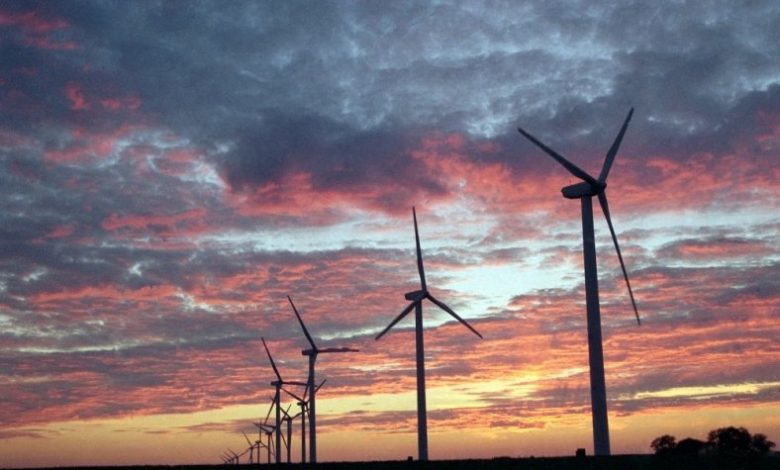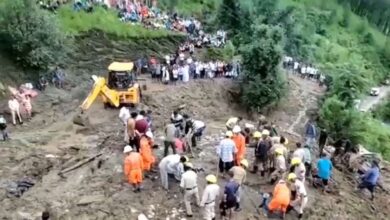Huge Global Demand For New Wind Technicians By 2027
The global wind industry needs nearly 600,000 technicians during the next five years

The global wind industry needs nearly 600,000 technicians during the next five years – with more than 240,000 of these will be new recruits to the industry.
According to the forecast of latest report – “The Global Wind Workforce Outlook 2023-2027” released today by The Global Wind Organisation (GWO) and Global Wind Energy Council (GWEC).
The report estimates forecasting the numbers of wind technicians required to construct, install, operate, and maintain (C&I and O&M) the anticipated global wind fleet up to 2027.
This report highlights the opportunities for local and national governments to leverage renewable energy expansion to foster job, training and reskilling opportunities and create a skilled workforce for the energy transition.
The Global Wind Workforce Outlook 2023-2027 sets out that over 574,000 technicians will be required for C&I and O&M by 2027, but to keep pace with this growth, almost 43% of them will be new to the industry, joining from an education and recruitment pipeline or transferring from other sectors, such as offshore oil and gas.
Annual wind energy installations are expected to double from 78 GW in 2022 to 155 GW in 2027, bringing the total wind capacity worldwide to more than 1,500 GW in just five years.
Driven by technology innovation and the fast-growing offshore wind market, the Outlook predicts a 17% rise in the number of wind technicians required for C&I and O&M over the five-year forecast period.
That growth would require an extra 84,600 technicians to support the expansion of wind power. However, with a typical 6% attrition rate the wind industry would also need to recruit an additional 159,200 people to replace the technicians expected to naturally exit the wind industry between 2023 to 2027.
The need to recruit the extra 243,800 new technicians over the next five years suggests a raft of opportunities for new talent to enter from full-time education and transition from other sectors, including from the conventional sector.
This in turn highlights the wind sector’s role in supporting a just and equitable energy transition away from fossil fuels. It highlights an urgent need for faster growth in safety and technical training capacity to meet the anticipated supply chain gaps.
The Outlook highlights onshore and offshore wind growth and workforce needs in 10 countries in particular: Australia, Brazil, China, Colombia, Egypt, India, Japan, Kenya, South Korea and the USA. The high wind power ambitions of these countries must be reinforced by a strong culture of health and safety and a trained workforce.
Jakob Lau Holst, CEO of Global Wind Organisation says “Workforce development is top of mind for policymakers, industry associations and employers. The Outlook demonstrates not just how many people will be needed but also emphasises how many of these will be new arrivals to the sector. This underlines the need for a renewed focus on entry level skills.”
Ben Backwell, CEO of GWEC adds: “A strong workforce and healthy supply chain will be crucial to the colossal growth of wind capacity in this decade. It is vital that the growing workforce is provided with the tools to train properly, with an approach that puts health and safety at the heart of industry growth. GWEC The report sets out how to maintain a safe and healthy work environment and scale up training capacity to meet the demands of a 1.5C-compliant pipeline of wind energy projects around the world.
Key insights:
WIND TECHNICIANS REQUIRED FOR CONSTRUCTION, INSTALLATION, AND OPERATION AND MAINTENANCE OF THE GLOBAL WIND FLEET
By the end of 2027, the worldwide wind fleet will be roughly 1,581GW,Consequently, the number of wind technicians that will require industry training will increase 17% from 489,600 in 2022 to 574,200 in 2027. The number of new wind technicians is expected to increase by 48,800 on average per year from 2023 to 2027.
GAP BETWEEN CURRENT LEVELS OF GWO TRAINING AVAILABLE AND THE LEVELS REQUIRED TO TRAIN THE FORECASTED WORKFORCE ?
At the end of 2022, 145,000 technicians (or 30% of the estimated workforce) already held at least one valid certificate from GWO’s Basic Safety Training (BST) Standard. This means that from 2023 to 2027 an additional 429,200 technicians will need wind industry training. More than 80% of these technicians will be required in 10 countries: Australia, Brazil, China, Colombia, Egypt, India, Japan, Kenya, South Korea and USA.
About GWEC
GWEC is a member-based organisation that represents the entire wind energy sector. The members of GWEC represent over 1,500 companies, organisations and institutions in more than 80 countries.
About GWO
GWO is a non-profit group of wind turbine owners and wind turbine manufacturers, committed to the creation and adoption of standardised safety training and emergency procedures.
The writer of this article is Dr. Seema Javed, an environmentalist & a communications professional in the field of climate and energy




